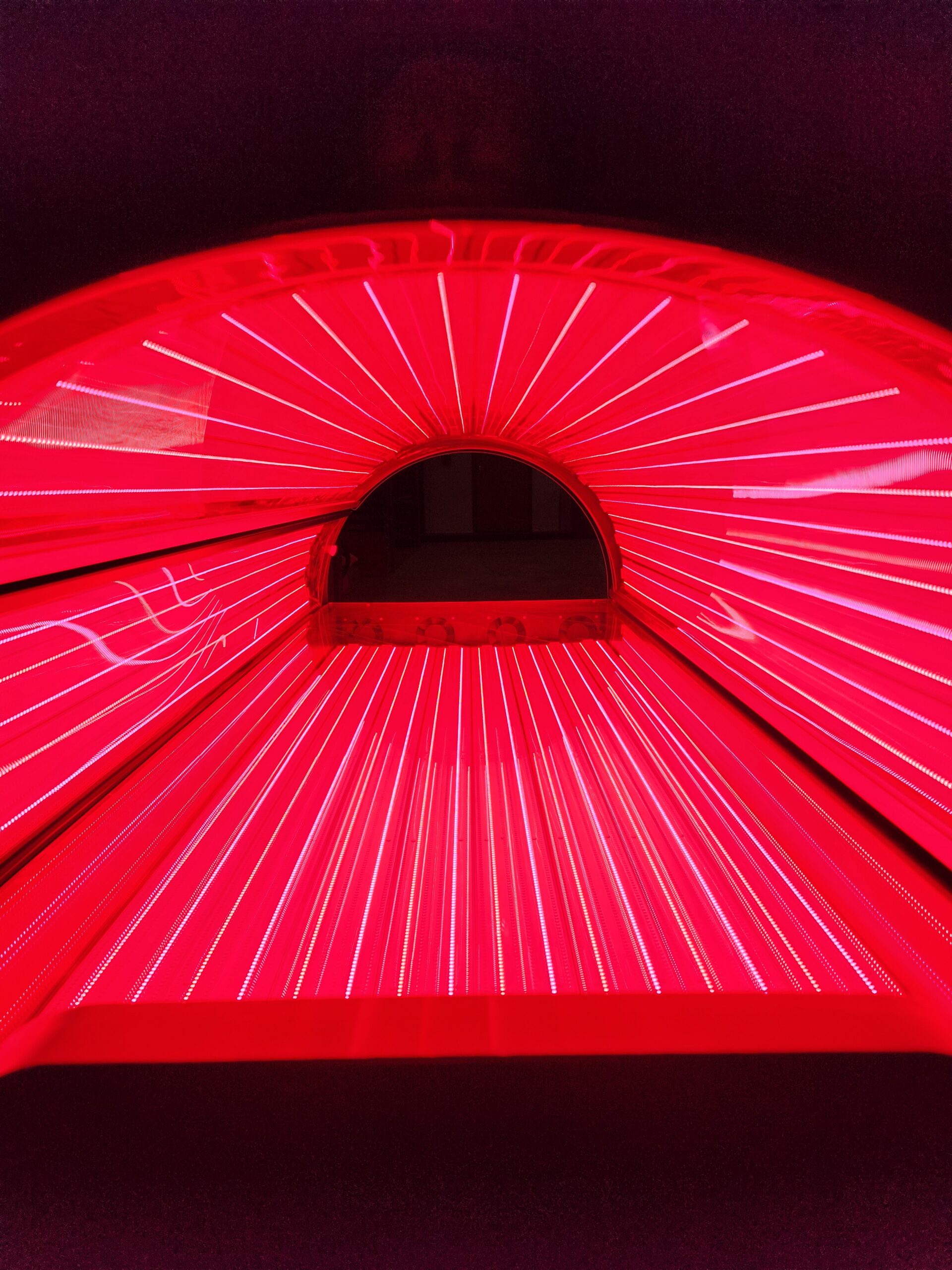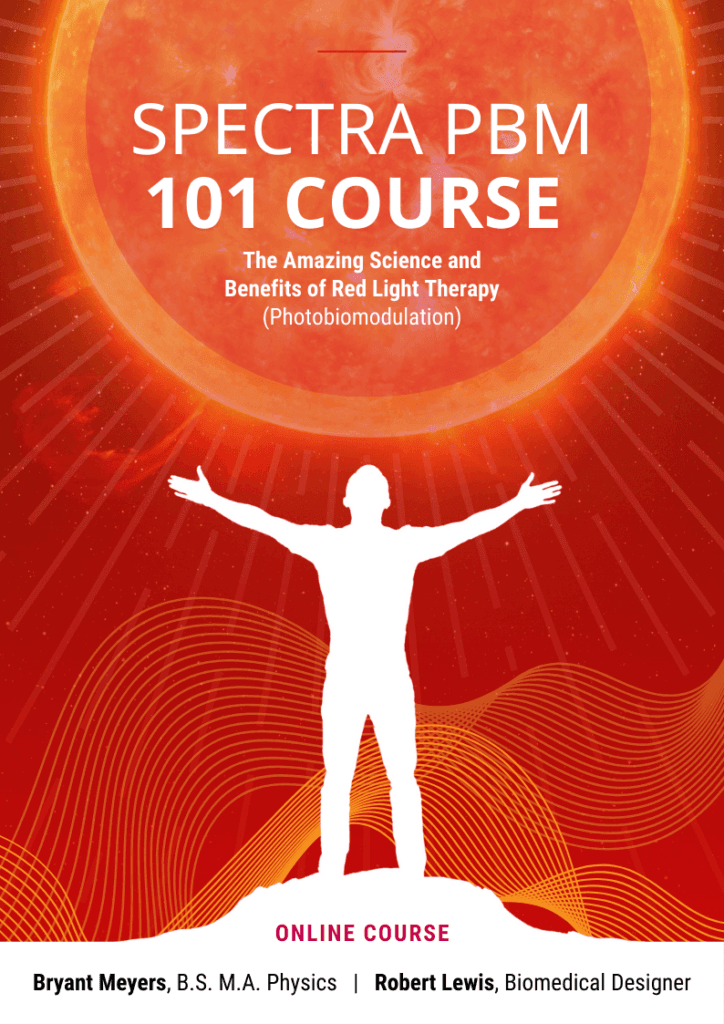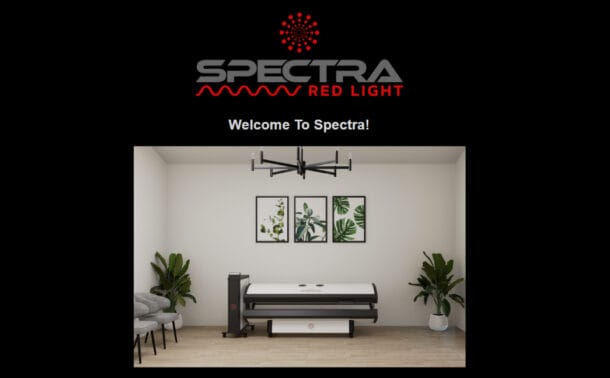Skin pigmentation issues, such as hyperpigmentation, melasma, and age spots, can be a source of frustration and self-consciousness for many individuals. These conditions occur when there is an overproduction or uneven distribution of melanin, the pigment responsible for giving color to our skin, hair, and eyes. According to information published in the American Academy of Dermatology, around 84.5 million Americans are affected by skin diseases annually. [1]. While there are various factors that can influence skin pigmentation, such as sun exposure, hormonal changes, aging, and genetics, finding an effective solution can be challenging.
Red Light Therapy, a non-invasive and innovative approach to addressing skin pigmentation concerns. Red Light Therapy harnesses the power of specific wavelengths of light to stimulate cellular processes and promote healthier, more evenly toned skin. By targeting the underlying physiological mechanisms involved in melanin production and distribution, Red Light Therapy offers a safe and efficient means of improving the appearance of hyperpigmentation, melasma, and age spots.
In this article, we will talk about the science behind Red Light Therapy, exploring how it works on a biological level to address skin pigmentation issues. We will discuss the specific wavelengths used, the physiological mechanisms of action, and the numerous benefits that Red Light Therapy can provide for those seeking a clearer, more radiant complexion. By understanding the scientific foundation of this cutting-edge therapy, you will be better equipped to make informed decisions about incorporating Red Light Therapy into your skincare regimen for optimal results.
The Advantages of Red Light Therapy for Skin Pigmentation
Diminishing the Visibility of Hyperpigmentation
One of the most significant benefits of Red Light Therapy for skin pigmentation is its ability to diminish the visibility of hyperpigmentation. By suppressing tyrosinase activity and reducing melanocyte proliferation, Red Light Therapy effectively inhibits the overproduction of melanin, leading to a more even skin tone. The modulation of cytokine production and regulation of matrix metalloproteinases (MMPs) further contribute to the reduction of hyperpigmentation by promoting a healthier, more balanced skin environment.
Enhancing Skin Tone and Texture
Red Light Therapy not only addresses pigmentation issues but also enhances overall skin tone and texture. The stimulation of collagen synthesis and preservation of extracellular matrix integrity, achieved through the downregulation of MMPs, leads to firmer, smoother, and more resilient skin. This comprehensive approach to skin rejuvenation results in a more youthful and radiant complexion, with a noticeable improvement in skin texture and tone.
Fading Age Spots and Sun-Induced Pigmentation
Age spots and sun-induced pigmentation are common concerns for many individuals, particularly those with a history of sun exposure. Red Light Therapy has been shown to effectively fade these types of pigmentation by targeting the melanocytes responsible for their formation. By suppressing melanin synthesis and promoting a more even distribution of pigment, Red Light Therapy can help to minimize the appearance of age spots and sun damage, revealing a clearer and more uniform complexion.
A Painless and Non-Invasive Approach
One of the most appealing aspects of Red Light Therapy is its non-invasive and painless nature. Unlike more aggressive pigmentation therapies, such as chemical peels or laser resurfacing, Red Light Therapy does not involve any discomfort or downtime. Patients can undergo the therapy without experiencing any pain or requiring any recovery period, making it an ideal option for those seeking a gentle yet effective solution for their pigmentation concerns.
Minimal Adverse Effects Compared to Alternative Therapies
Compared to other pigmentation therapies, Red Light Therapy has been shown to have minimal adverse effects. While some treatments may cause redness, irritation, or even scarring, Red Light Therapy is generally well-tolerated by most individuals. The use of non-ionizing, low-level light energy ensures that the therapy is safe and does not cause any long-term damage to the skin. This makes Red Light Therapy an attractive choice for those with sensitive skin or those who are hesitant to undergo more invasive procedures.
The benefits of Red Light Therapy for skin pigmentation are numerous and well-supported by scientific evidence. By targeting the underlying physiological mechanisms involved in melanin production and skin rejuvenation, Red Light Therapy offers a comprehensive and non-invasive approach to achieving a more even, youthful, and radiant complexion. Whether addressing hyperpigmentation, age spots, or sun damage, Red Light Therapy provides a safe and effective solution for individuals seeking to improve the appearance of their skin without the risks or downtime associated with more aggressive therapies.

The Science of Skin Pigmentation
Skin pigmentation is primarily determined by the presence and distribution of melanin, a complex polymer produced by specialized cells called melanocytes. Melanin acts as a natural sunscreen, absorbing and scattering ultraviolet (UV) radiation to protect the skin from damage. The amount and type of melanin produced by melanocytes determine an individual’s skin color, with higher levels of melanin resulting in darker skin tones.
Factors Influencing Skin Pigmentation
UV Radiation and Sun Exposure
Exposure to UV radiation from the sun is a major factor in skin pigmentation. When the skin is exposed to sunlight, melanocytes increase their production of melanin as a protective response. This leads to the darkening of the skin, commonly known as tanning. However, chronic sun exposure can cause uneven pigmentation and lead to the development of hyperpigmentation, age spots, and other skin pigmentation disorders.
Hormonal Fluctuations
Hormonal changes, particularly those associated with pregnancy, menopause, and certain endocrine disorders, can significantly impact skin pigmentation. Estrogen and progesterone, two female sex hormones, stimulate melanin production, which can lead to the development of melasma, a condition characterized by dark, blotchy patches on the face.
The Aging Process
As we age, our skin undergoes various changes that can affect pigmentation. The number of melanocytes in the skin decreases, leading to a reduction in melanin production. However, the remaining melanocytes may become larger and more concentrated in certain areas, resulting in the formation of age spots and uneven skin tone.
Genetic Predisposition
Genetics play a significant role in determining an individual’s skin pigmentation. Certain genetic variations can influence the amount and type of melanin produced by melanocytes, leading to differences in skin color and susceptibility to pigmentation disorders.
Common Skin Pigmentation Disorders
Hyperpigmentation: An Overproduction of Melanin
Hyperpigmentation is a condition characterized by patches of skin that become darker than the surrounding area due to an excess production of melanin. This can be triggered by various factors, including sun exposure, hormonal changes, and inflammation. Hyperpigmentation can manifest as freckles, age spots, or melasma.
Melasma: The “Mask of Pregnancy”
Melasma is a common pigmentation disorder that primarily affects women, particularly those with darker skin tones. It is often referred to as the “mask of pregnancy” because it commonly occurs during pregnancy due to hormonal changes. Melasma appears as dark, irregular patches on the face, typically on the cheeks, forehead, nose, and upper lip.
Age Spots: A Sign of Sun Damage
Age spots, also known as solar lentigines, are flat, dark patches of skin that develop as a result of prolonged sun exposure. They are most commonly found on areas of the body that receive the most sun, such as the face, hands, and arms. Age spots are more prevalent in older individuals and those with fair skin.
By understanding the science behind skin pigmentation and the various factors that can influence it, we can better appreciate the potential of Red Light Therapy as a non-invasive and targeted approach to addressing pigmentation concerns. In the following sections, we will explore how Red Light Therapy works on a cellular level to promote a more even and radiant complexion.

The Physiological Mechanism of Action of Red Light Therapy for Pigmentation
Inhibiting Melanin Synthesis
Red Light Therapy has been shown to inhibit melanin synthesis through two primary mechanisms: suppressing tyrosinase activity and reducing melanocyte proliferation. Tyrosinase is a key enzyme involved in the production of melanin, and by suppressing its activity, Red Light Therapy can effectively diminish the overproduction of pigment. Additionally, Red Light Therapy has been observed to reduce the proliferation of melanocytes, further contributing to the overall reduction in melanin synthesis.
A recent study titled “Photobiomodulation for melasma treatment: Integrative review and state of the art” highlights the promising potential of photobiomodulation (PBM), another term for Red Light Therapy, in the treatment of melasma. The authors state, “PBM seems to act by inhibiting melanogenesis and by reducing erythema and vascularization while improving the dermal condition.”[2] This finding talks about the multifaceted approach of Red Light Therapy in addressing skin pigmentation issues, targeting not only melanin production but also improving the overall health and appearance of the skin.
Modulating Cytokine Production
Cytokines are small proteins that play a crucial role in regulating immune responses and inflammatory processes in the skin. Red Light Therapy has been demonstrated to modulate cytokine production, attenuating pro-inflammatory cytokines such as interleukin-1 (IL-1), interleukin-6 (IL-6), and tumor necrosis factor-alpha (TNF-α), while promoting anti-inflammatory cytokines like interleukin-10 (IL-10). By reducing inflammation and promoting a more balanced immune response, Red Light Therapy can help to alleviate the pigmentation changes associated with inflammatory skin conditions.
Regulating Matrix Metalloproteinases (MMPs)
Matrix metalloproteinases (MMPs) are enzymes that break down collagen and other components of the extracellular matrix in the skin. Overexpression of certain MMPs, such as MMP-1, MMP-3, and MMP-9, has been linked to photoaging, skin damage, and uneven pigmentation. Red Light Therapy has been shown to downregulate the expression of these MMPs, thereby preserving the integrity of the extracellular matrix and promoting a more even skin tone.
The study “Low-level laser (light) therapy (LLLT) in skin: stimulating, healing, restoring” highlights the broad spectrum of applications for LLLT, or Red Light Therapy, in dermatology. The authors state, “LLLT appears to have a wide range of applications of use in dermatology, especially in indications where stimulation of healing, reduction of inflammation, reduction of cell death and skin rejuvenation are required.”[3] This statement reinforces the versatility of Red Light Therapy in addressing various skin concerns, including pigmentation issues, by promoting healing, reducing inflammation, and stimulating rejuvenation at a cellular level.
By targeting multiple physiological pathways, including melanin synthesis, cytokine production, and MMP regulation, Red Light Therapy offers a comprehensive approach to improving skin pigmentation. The scientific evidence presented in these studies supports the use of Red Light Therapy as a non-invasive and effective solution for individuals seeking to achieve a more even and radiant complexion.
Integrating Red Light Therapy into Your Skincare Regimen
One of the most effective ways to incorporate Red Light Therapy into your skincare routine is through professional in-office therapy sessions with a trained health specialist. These sessions typically involve the use of high-quality, medical-grade Red Light Therapy devices that deliver optimal wavelengths and energy densities for targeting skin pigmentation issues. During these sessions, your skincare professional will customize the therapy protocol to address your specific concerns, ensuring that you receive the most appropriate and effective therapy for your individual needs.
For those who prefer the convenience and flexibility of at-home therapies, there are now many high-quality Red Light Therapy devices available for personal use. These devices allow you to enjoy the benefits of Red Light Therapy in the comfort of your own home, on your own schedule. When selecting an at-home device, it is essential to choose a product that offers clinically-proven wavelengths. (605-670 nm for red light and 810-1064 nm for near-infrared light)

Given the scientific evidence and the many benefits of Red Light Therapy for skin pigmentation, we encourage readers to explore this innovative and non-invasive approach to achieving a clearer, more even complexion. Red Light Therapy offers a safe and effective alternative to more aggressive pigmentation therapies, with minimal adverse effects and no downtime required.
Whether you choose to undergo professional in-office therapy sessions or utilize the convenience of at-home devices, Red Light Therapy can be seamlessly integrated into your skincare routine. By combining regular red light therapy sessions with healthy lifestyle habits, you can optimize the results and achieve a more youthful appearance.
We hope that this article has empowered you with the knowledge and understanding necessary to make informed decisions about incorporating Red Light Therapy into your skincare regimen.
For those who prefer the convenience and flexibility of at-home therapies, we recommend exploring high quality, clinically proven Red Light Therapy devices that offer the optimal wavelengths and energy densities for targeting skin pigmentation issues. By investing in your skin health and committing to a consistent Red Light Therapy routine, you can unlock the full potential of this transformative technology and achieve the clear, even, and radiant complexion you deserve.
References
[1] Burden of skin disease. (s. f.). https://www.aad.org/member/clinical-quality/clinical-care/bsd#:~:text=84.5%20million%20Americans%20%E2%80%94%20one%20in%20four%20%E2%80%94%20were%20impacted%20by%20skin%20disease
[2] Galache TR, Sena MM, Tassinary JAF, Pavani C. Photobiomodulation for melasma treatment: Integrative review and state of the art. Photodermatol Photoimmunol Photomed. 2024; 40:e12935. doi:10.1111/phpp.12935
[3] Avci P, Gupta A, Sadasivam M, Vecchio D, Pam Z, Pam N, Hamblin MR. Low-level laser (light) therapy (LLLT) in skin: stimulating, healing, restoring. Semin Cutan Med Surg. 2013 Mar;32(1):41-52. PMID: 24049929; PMCID: PMC4126803.


